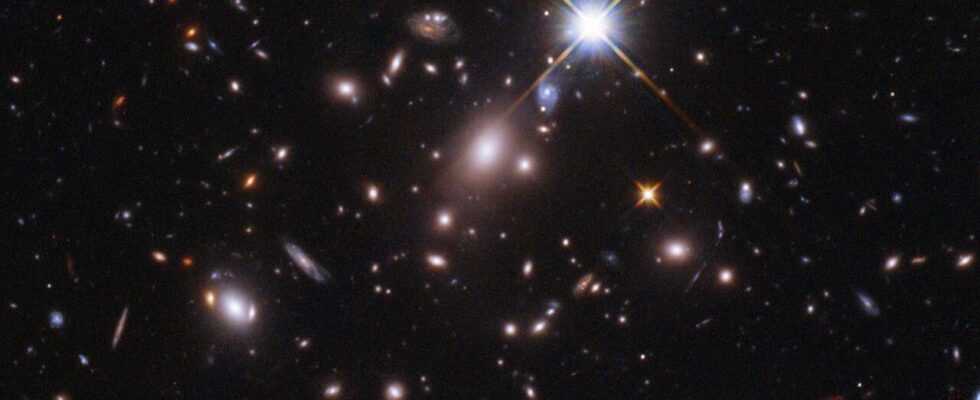The nickname sounds good: Earendel. The word comes from Old English and means something like “morning star” or “rising light”. A research team has now chosen it for a star it discovered that sent its light into space around 900 million years after the Big Bang. This makes Earendel the most distant individually visible star that scientists have been able to discover so far. The study was published in the journal »Nature«.
Normally, such old and thus distant stars can no longer be observed individually at all: They are much too faint. But in the case of Earendel, gravitational lenses have once again come in handy. With a gravitational lens, the light is bundled and thus amplified due to a massive object lying between the observer and the celestial body. The effect had already been predicted by Albert Einstein in 1936, but was only observed decades later.
Earendel sets a new record
Researchers can now detect all kinds of celestial objects thanks to various gravitational lensing effects: A microgravity lens, for example, in which a star serves as the lens, can bring to light free-flying planets that drift through space all by themselves. Massive clusters of galaxies as lenses can make the light of objects behind appear as multiple images: For example, we see a quasar in the constellation Pegasus four times in the sky as the famous »Einstein Cross«.
The record holder Earendel | Not much can be seen, but it is still spectacular: the white arrow points to the most distant star that has ever been discovered. It only emitted its light around 900 million years after the Big Bang. This corresponds to a redshift of 6.2. Only thanks to a gravitational lens could it be observed at all with the help of the Hubble Space Telescope.
Astronomers have also detected individual, distant stars thanks to gravitational lenses. So far, however, this only applied to celestial bodies that were no further than 9 billion light years away from us. The star Earendel is the new record holder with a redshift of 6.2 and a resulting distance of around 12.9 billion light years. A galaxy cluster in the foreground had amplified its light by a factor of several thousand, making it visible in Hubble Space Telescope images.
